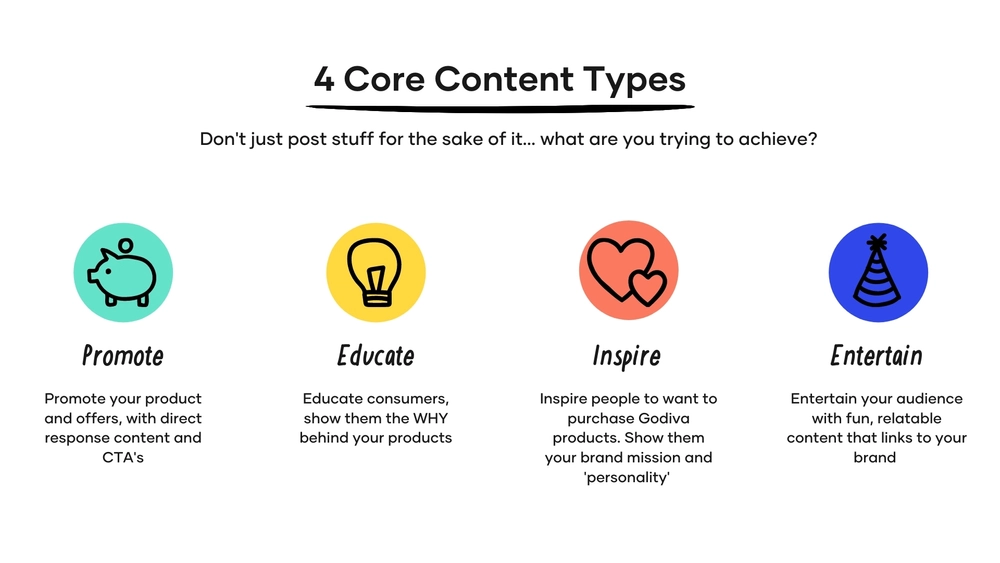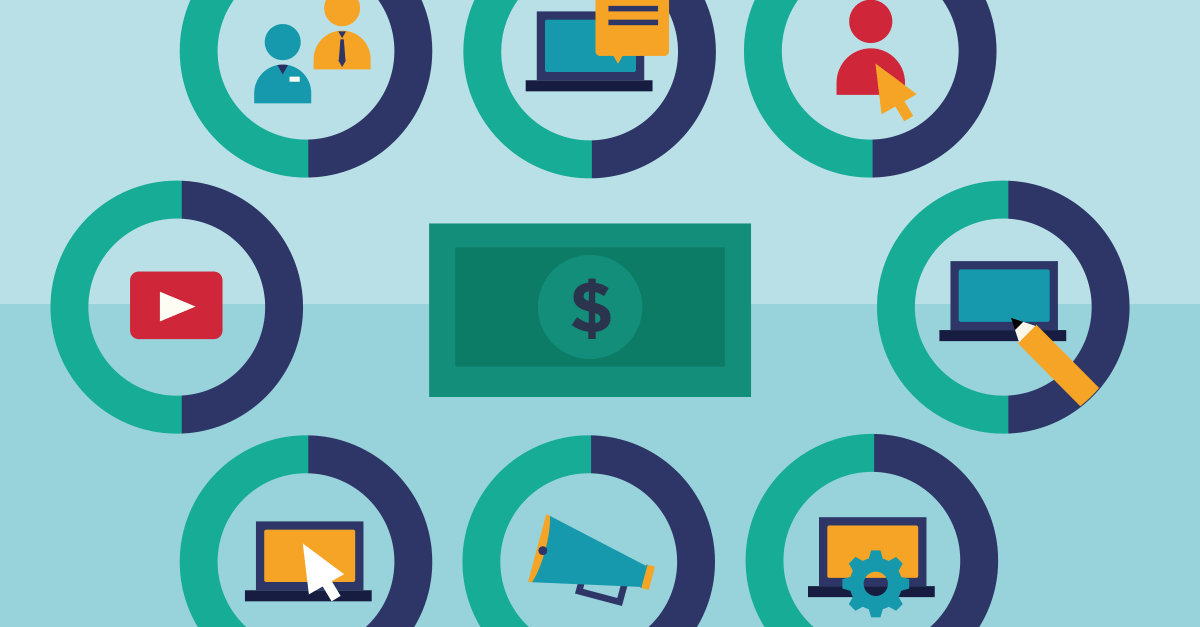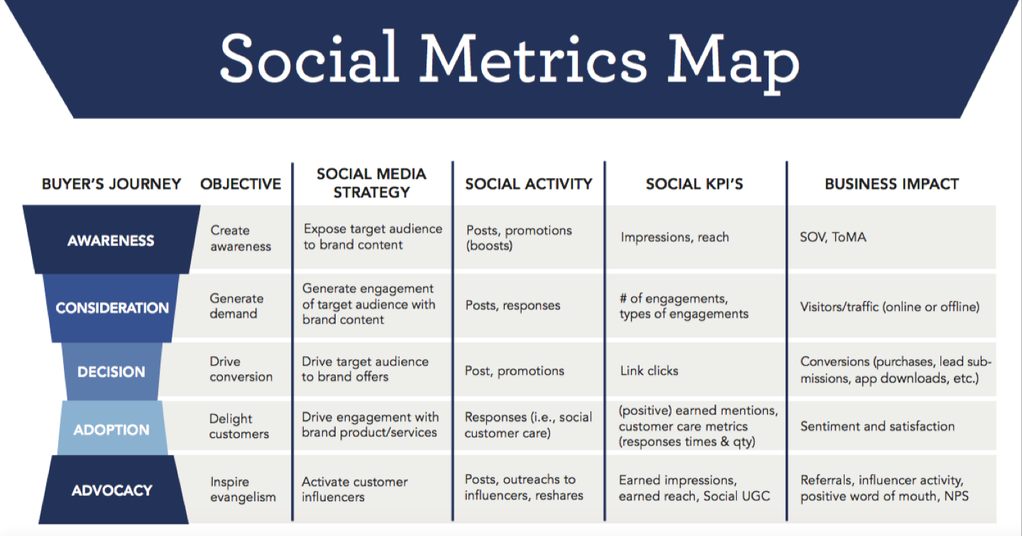Did you know that 54% of social browsers use social media to research products? Imagine turning those casual scrollers into loyal customers with just a few well-placed ads.
Welcome to the wild, wonderful world of social media advertising, where likes, shares, and comments can transform into leads, sales, and loyal fans.
In today’s digital age, if you’re not leveraging the power of social media ads, you’re essentially leaving money on the table. Businesses, from scrappy startups to corporate giants, are diving headfirst into the social media pool, all trying to hook the same prized fish: new customers.
This article will unravel the secrets of social media advertising, guiding you through the steps to effectively harness its potential for customer acquisition. We’ll explore platforms, craft compelling content, master targeting strategies, and measure success, all while keeping things fun and relatable.
Ready to dive in? Let’s unlock the magic of social media ads together!
The Power of Social Media Advertising
Historical Context:
Once upon a time, in the early 2000s, social media was a fledgling world of friends reconnecting, and brands barely had a presence. Enter Facebook, which in 2007 opened its gates to advertisers, transforming the landscape forever.
The evolution continued with platforms like Twitter, Instagram, LinkedIn, and more, each adding unique ways for businesses to reach potential customers. Fast forward to today, social media advertising isn’t just a nice-to-have; it’s a must-have. From humble beginnings to the powerhouse it is now, social media ads have come a long way.
Current Landscape:
Picture this: billions of people scrolling through their social feeds daily. It’s like a never-ending carnival, and your business can set up a booth right in the center. Social media advertising has become a cornerstone of digital marketing strategies, thanks to its ability to target specific demographics, track performance, and adjust in real-time.
Platforms like Facebook, Instagram, TikTok, and LinkedIn are more than just social networks; they are dynamic advertising platforms brimming with potential. In this digital carnival, the right ad can turn a casual visitor into a devoted customer.
Case Studies:
- Airbnb: When Airbnb wanted to make a splash in new markets, they turned to social media ads. By creating visually stunning Instagram and Facebook ads showcasing unique stays, they captured the wanderlust of millions, resulting in a significant boost in bookings.
- Dollar Shave Club: This now-famous startup used witty, relatable, and downright hilarious ads on YouTube and Facebook to disrupt the razor industry. Their approach not only captured attention but also converted curious viewers into subscribers.
- Spotify: Leveraging user data, Spotify’s “Wrapped” campaign became an annual phenomenon. By personalizing ads and sharing users’ top songs and artists, Spotify engaged millions, driving both brand loyalty and new subscriptions.
These brands didn’t just dip their toes into social media advertising; they cannonballed in, making waves and reaping the rewards. So, are you ready to make a splash?
Choosing the Right Platform

Overview of Major Platforms:
In the world of social media advertising, picking the right platform is like choosing the perfect pair of shoes: it needs to fit just right. Let’s take a look at the heavy hitters:
- Facebook: The granddaddy of social media, perfect for targeting a broad audience.
- Instagram: The visual storyteller’s dream, ideal for brands with eye-catching content.
- LinkedIn: The go-to for B2B marketing, professional services, and networking.
- X (previously, Twitter): The platform for real-time engagement and trending topics.
- TikTok: The playground for creative, short-form viral video content, capturing younger audiences.
Audience Demographics:
Understanding who hangs out where can save you time and money:
- Facebook: Home to over 2.8 billion users, skewing towards users aged 25-34, with a fairly even gender split.
- Instagram: Popular among 18-34-year-olds, slightly more female users, and a haven for influencers and brands.
- LinkedIn: Professional crowd, mainly 25-34-year-olds, with a higher income and education level.
- X (previously, Twitter): Attracts a diverse age group, with a slight male dominance, great for tech-savvy and news-oriented users.
- TikTok: Dominated by Gen Z and young millennials, with a penchant for viral trends and creativity.
Platform Strengths:
Each platform has its own superpowers:
- Facebook: Robust targeting options, detailed analytics, and versatile ad formats.
- Instagram: High engagement rates, influencer collaborations, and visually driven content.
- LinkedIn: B2B targeting, professional networking, and high-quality lead generation.
- X (previously, Twitter): Real-time engagement, hashtag trends, and conversational ads.
- TikTok: Viral potential, creative freedom, and a younger, highly engaged audience.
Matching Goals with Platforms:
Choosing the right platform depends on what you want to achieve:
- Broad Reach: Facebook is your best bet, with its massive user base and versatile ad options.
- Visual Engagement: Instagram shines here, especially if your content is visually stunning.
- Professional Networking: LinkedIn is unmatched for B2B marketing and connecting with industry professionals.
- Real-Time Interaction: X (previously, Twitter) is perfect for engaging in live conversations and trending topics.
- Youthful Creativity: TikTok is the playground for brands aiming to capture the attention of younger audiences with fun, engaging videos.
So, whether you’re a startup looking to make waves or an established brand aiming to connect with new customers, picking the right platform is your first step to social media advertising success. Time to lace up those perfect shoes and start your journey!
Crafting Compelling Ad Content
Understanding Your Audience:
Before you dive into the creative pool, you need to know who you’re swimming with. Here’s how to get to know your target audience:
- Surveys and Polls: Direct feedback from your existing customers can reveal valuable insights.
- Social Media Insights: Use the analytics tools on each platform to understand who interacts with your content.
- Competitor Analysis: Check out who your competitors are targeting and engaging with.
- Customer Personas: Create detailed profiles of your ideal customers, including demographics, interests, and pain points.
Ad Formats:
Different formats suit different messages. Here’s a quick rundown:
- Video Ads: Perfect for storytelling and showcasing products in action.
- Carousel Ads: Great for displaying multiple products or a step-by-step process.
- Stories Ads: Short, engaging, and full-screen – ideal for quick, immersive experiences.
- Sponsored Posts: These blend seamlessly into feeds and look like regular posts, perfect for native advertising.
- Lead Ads: Designed to capture user information directly within the social platform, reducing friction in the customer journey.
Creative Best Practices:
Your ad’s visual appeal is crucial. Here’s how to nail it:
- High-Quality Images/Videos: Blurry or low-resolution content is a no-go.
- Consistent Branding: Use your brand colors, fonts, and style to create a cohesive look.
- Clear Focal Point: Ensure there’s a single, clear focal point in your ad to draw attention.
- Mobile-Friendly Design: Most users will see your ad on their phones, so make sure it looks great on small screens.
- Test Different Visuals: Don’t be afraid to experiment with various visuals to see what resonates best with your audience.
Copywriting Tips:
Words matter just as much as visuals. Here’s how to craft compelling ad copy:
- Keep It Short and Sweet: Attention spans are short, so make every word count.
- Highlight Benefits, Not Features: Show your audience how your product or service can improve their lives.
- Include a Clear CTA: Tell your audience exactly what you want them to do next (e.g., “Shop Now,” “Learn More”).
- Use Engaging Language: Be conversational and friendly, and don’t shy away from a bit of humor if it fits your brand.
- Create Urgency: Phrases like “Limited Time Offer” or “Only a Few Left” can encourage quicker action.
By understanding your audience, choosing the right ad format, crafting visually appealing ads, and writing compelling copy, you’ll create social media ads that not only capture attention but also convert browsers into buyers. Now, let’s dive deeper into targeting strategies to make sure your ads reach the right people. Ready? Let’s go!
Targeting Strategies for Maximum Reach
Audience Segmentation:
Think of audience segmentation like slicing a pizza: the more precise the cuts, the more everyone gets exactly what they want. Here’s how to slice your audience for maximum impact:
- Demographic Segmentation: Target based on age, gender, income, education, and more.
- Geographic Segmentation: Focus on specific locations, from countries to neighborhoods.
- Psychographic Segmentation: Dive into your audience’s lifestyles, values, and interests.
- Behavioral Segmentation: Target based on user behavior, such as purchasing habits, browsing history, and engagement levels.
Custom Audiences:
This is where you put your customer data to work. Custom audiences allow you to target people who already know your brand:
- Customer Lists: Upload your existing customer email lists to target them directly on social media.
- Website Visitors: Use tracking pixels to create audiences based on people who have visited your site.
- App Users: Target users who have engaged with your mobile app.
Lookalike Audiences:
Want to find more people like your best customers? Lookalike audiences are your answer:
- Source Audience: Start with a custom audience that performs well (e.g., high-value customers).
- Platform Magic: Social media platforms use algorithms to find users similar to your source audience.
- Expanding Reach: This strategy helps you reach new, highly relevant potential customers who are likely to be interested in your brand.
Retargeting:
Ever felt like an ad was following you around the internet? That’s retargeting, and it works like a charm:
- Website Visitors: Retarget users who visited your site but didn’t convert, reminding them of what they left behind.
- Cart Abandoners: Nudge those who added items to their cart but didn’t complete the purchase.
- Engaged Users: Retarget people who interacted with your content but haven’t yet become customers.
By segmenting your audience, creating custom and lookalike audiences, and utilizing retargeting techniques, you can ensure your ads reach the right people at the right time. Now, let’s talk about how to budget for these ads and make sure you get the biggest bang for your buck. Ready to optimize your spend? Let’s dive in!
Budgeting and Bidding Strategies
Setting a Budget:
First things first, let’s talk money. Determining your social media ad budget can feel like guessing how much candy you’ll need for Halloween – too little and you run out, too much and you’re left with a sugar hangover. Here’s how to find the sweet spot:
- Define Your Goals: Are you looking to increase brand awareness, drive website traffic, or boost sales? Your goals will guide your budget.
- Start Small: Begin with a modest budget to test the waters. You can always scale up as you see what works.
- Industry Benchmarks: Research average costs in your industry to set realistic expectations.
- Calculate ROAS (Return on Ad Spend): Determine how much revenue you need to generate for every dollar spent to break even or profit.
Bidding Options:
When it comes to bidding, you’ve got a few options. It’s like choosing your fighter in a video game – each has its strengths and weaknesses:
- CPC (Cost Per Click): You pay every time someone clicks on your ad. Ideal if you want to drive traffic to your website.
- CPM (Cost Per Mille): You pay per 1,000 impressions. Great for increasing brand awareness.
- CPA (Cost Per Action): You pay when a specific action (like a sale or sign-up) is completed. Perfect for performance-based campaigns.
Optimizing Spend:
Maximizing your budget is all about being smart with your spend. Think of it as getting the best deals during a shopping spree:
- Use Ad Scheduling: Run your ads during peak times when your audience is most active.
- Target Narrowly: Ensure your ads are only shown to the most relevant audience segments.
- Leverage Frequency Caps: Limit how often the same user sees your ad to prevent ad fatigue.
- Monitor and Adjust: Keep an eye on your campaigns and make adjustments in real-time based on performance data.
A/B Testing:
A/B testing is like having a secret weapon in your advertising arsenal. It allows you to compare two versions of an ad to see which one performs better:
- Test One Variable at a Time: Focus on one element (headline, image, CTA) to isolate its impact.
- Use Significant Sample Sizes: Ensure your test reaches enough people to provide meaningful results.
- Analyze Results: Look at which version performs better in terms of your key metrics (CTR, conversion rate).
- Iterate and Improve: Use the insights from your A/B tests to refine your ads and improve future campaigns.
By setting a clear budget, choosing the right bidding strategy, optimizing your spend, and implementing A/B testing, you can ensure your social media ad campaigns are both effective and efficient. Now, let’s move on to measuring success – because what’s the point of all this effort if you can’t see the results? Ready to dive into the metrics that matter? Let’s go!
Measuring Success
Key Metrics:
Success in social media advertising is all about the numbers. Here are the essential metrics you should keep an eye on to gauge your ad performance:
- CTR (Click-Through Rate): Measures how often people click on your ad after seeing it. A high CTR indicates your ad is resonating with your audience.
- Conversion Rate: Tracks the percentage of users who take a desired action (like making a purchase) after clicking your ad. This is crucial for assessing the effectiveness of your ad in driving sales or sign-ups.
- ROI (Return on Investment): Calculates the revenue generated from your ads compared to the cost of running them. It’s the ultimate measure of your ad campaign’s profitability.
- CPC (Cost Per Click): Shows how much you’re paying for each click on your ad. It helps you understand the efficiency of your spend.
- CPA (Cost Per Acquisition): Measures the cost to acquire a customer. This is essential for performance-based campaigns.
- Engagement Rate: Looks at how users interact with your ad (likes, shares, comments). High engagement often leads to better organic reach and brand awareness.
- Impressions: Counts how many times your ad is shown. It’s a basic metric for understanding the reach of your campaign.
Analytics Tools:
You don’t need a crystal ball to measure your ad performance. Here are some top-notch tools that do the job:
- Facebook Ads Manager: Provides detailed insights into your ad performance on Facebook and Instagram, including CTR, conversion rates, and more.
- Google Analytics: Offers robust tracking for your website, helping you see how social media traffic converts.
- LinkedIn Campaign Manager: Tracks performance metrics for your LinkedIn ads, with a focus on B2B engagement.
- X (Twitter) Analytics: Gives you data on ad performance, including engagement and impressions.
- TikTok Ads Manager: Delivers insights into how your ads are performing with the younger, creative crowd.
Data Interpretation:
Once you have the data, it’s time to play detective. Here’s how to make sense of it all:
- Identify Trends: Look for patterns in your data. Are certain types of ads consistently performing better?
- Compare Against Benchmarks: Measure your metrics against industry standards or past campaign performance to see how you’re stacking up.
- Segmentation Analysis: Break down your data by segments (age, location, device) to see which groups are most responsive to your ads.
- ROI Analysis: Calculate your ROI to determine if your ads are profitable. If not, identify which areas need improvement.
Continuous Improvement:
Resting on your laurels is not an option in the fast-paced world of social media advertising. Here’s why continuous improvement is key:
- Ongoing Optimization: Regularly tweak your ads based on performance data to ensure they remain effective. This could mean adjusting your targeting, changing your ad copy, or experimenting with new visuals.
- A/B Testing Insights: Use the results from A/B tests to make informed decisions about future ads.
- Stay Updated: Social media platforms constantly evolve. Stay informed about new features and updates to keep your strategy current.
- Feedback Loop: Create a feedback loop where you regularly review performance, make adjustments, and measure the impact of those changes.
By tracking key metrics, using the right analytics tools, interpreting your data effectively, and continuously optimizing your campaigns, you’ll ensure that your social media ads not only meet but exceed your customer acquisition goals. Ready to avoid common pitfalls and make your ads even more powerful? Let’s tackle that next!
Common Pitfalls and How to Avoid Them
Overcoming Ad Fatigue: Strategies for Keeping Ads Fresh and Engaging
We’ve all been there—scrolling through our feeds, eyes glazing over the same repetitive ads. Ad fatigue is real, but fear not! The cure lies in creativity and variety. Rotate your ad creatives regularly; think of it as giving your audience a refreshing splash of content coolness.
Use dynamic content that adapts to different user interactions, and don’t shy away from a little humor. A witty headline or a quirky image can work wonders. Remember, an ad should be like a good joke—unexpected and memorable.
Avoiding Audience Overlap: Ensuring Your Ads Reach a Diverse Audience
Picture this: you’re throwing a party, but only your neighbors show up. Boring, right? That’s what happens when your ads keep hitting the same audience. To avoid this, diversify your targeting.
Use detailed audience segmentation to reach different demographics. Test various interest groups and geographic locations. Think of your audience like a buffet—everyone should get a taste of something they like. Mix it up, and you’ll have a packed house in no time!
Compliance and Regulations: Understanding and Adhering to Advertising Guidelines on Various Platforms
Navigating the world of advertising regulations can feel like tiptoeing through a minefield. But staying compliant doesn’t have to be a headache. Familiarize yourself with the ad policies of each platform.
They’re like the house rules at a friend’s place—understand them, and you won’t get kicked out. Ensure your ads are truthful, respectful, and transparent. And if you’re ever in doubt, think of it this way: if it sounds too good to be true, it probably needs a second look.
Learning from Mistakes: Common Mistakes and How to Learn from Them
Mistakes are like embarrassing photos from your college days—they’re inevitable but invaluable for growth. Don’t sweep them under the rug. Instead, analyze what went wrong. Was it the messaging? The targeting? The timing?
Use these insights to refine your strategy. Remember, every slip-up is a stepping stone to mastery. Embrace your blunders, learn from them, and come back stronger. After all, the best ads are born from a blend of creativity and lessons learned.
Future Trends in Social Media Advertising
Emerging Technologies: The Role of AI and Machine Learning in Social Media Advertising
Imagine having a crystal ball that predicts what your audience wants before they even know it themselves. That’s the magic of AI and machine learning in social media advertising.
These technologies analyze mountains of data at lightning speed, allowing you to tailor ads with pinpoint precision. Think of AI as your advertising assistant who never sleeps, constantly optimizing your campaigns for maximum impact. It’s not just the future—it’s happening now, making your ads smarter, faster, and more effective.
Influencer Partnerships: The Growing Importance of Influencers in Social Media Ads
In the kingdom of social media, influencers are the crowned royalty. Their ability to sway their followers’ opinions is unmatched, making them invaluable allies in your advertising arsenal.
Partnering with the right influencers can amplify your brand’s voice, giving it an authentic touch that traditional ads can’t replicate. Picture your product being endorsed by someone your audience trusts—it’s like getting a stamp of approval from a friend. And in the world of advertising, there’s nothing more powerful than trust.
Interactive Ads: The Rise of Interactive and Immersive Ad Experiences
Say goodbye to passive scrolling and hello to interactive ads that demand attention. From shoppable posts to augmented reality experiences, these ads engage users in ways that static images never could.
Imagine trying on a pair of virtual sunglasses or participating in a fun quiz that recommends your perfect product. Interactive ads turn the audience into active participants, making the ad experience enjoyable and memorable. It’s not just about selling—it’s about creating an experience that users will want to share.
Predictions: Expert Predictions on the Future of Social Media Advertising
The crystal ball of social media advertising reveals a future where personalization is paramount. Experts predict that ads will become even more tailored, with hyper-targeting capabilities that make each ad feel like it was crafted just for you.
Video content will dominate, driven by the rise of platforms like TikTok and Instagram Reels. Influencers will continue to reign supreme, but with a shift towards micro-influencers who offer niche authenticity. And let’s not forget the metaverse—a whole new frontier for immersive advertising experiences. The future is bright, bold, and brimming with possibilities.
Key Takeaways
We’ve journeyed through the vibrant world of social media advertising, uncovering strategies to dodge common pitfalls and embracing future trends with open arms.
From keeping your ads fresh and engaging to leveraging the power of AI, influencers, and interactive experiences, we’ve armed you with the tools to conquer the social media landscape. We’ve also peered into the crystal ball of advertising’s future, seeing a world where personalization, video content, and immersive experiences reign supreme.
Now that you’re equipped with these insights, it’s time to take action. Dive into the world of social media ads with curiosity and creativity. Experiment with different strategies, test new ideas, and don’t be afraid to take bold steps. Remember, every successful campaign starts with a single click. So, fire up those ad managers, set your budgets, and watch your customer base grow. Your next big win is just a campaign away.
As you venture into the dynamic realm of social media advertising, remember this: innovation thrives on the edge of comfort zones. Challenge yourself to push boundaries, embrace failures as learning opportunities, and continually evolve. The digital world is ever-changing, and your ability to adapt and innovate will set you apart. So, go forth and create ads that not only capture attention but also inspire action. Your journey to mastering social media advertising starts now—let’s make it unforgettable.











